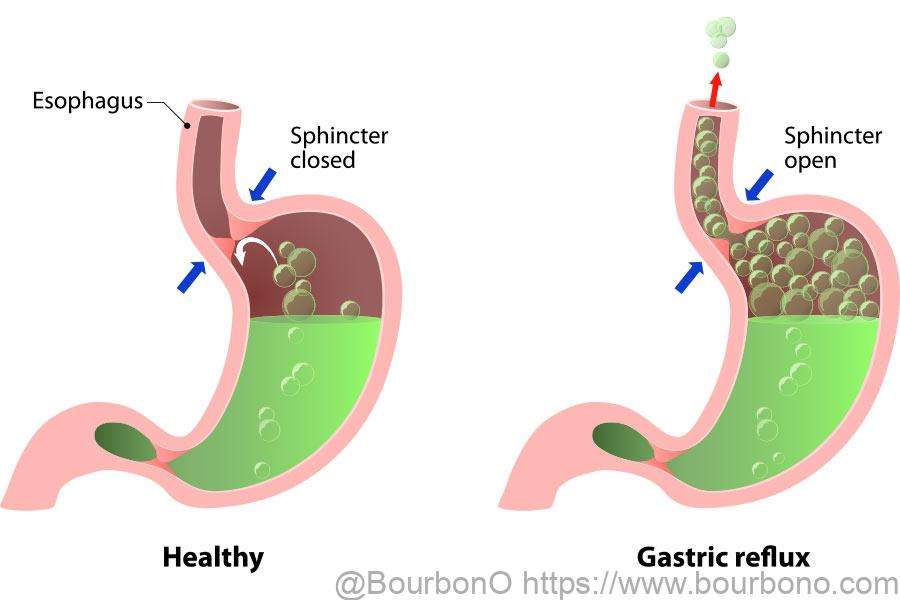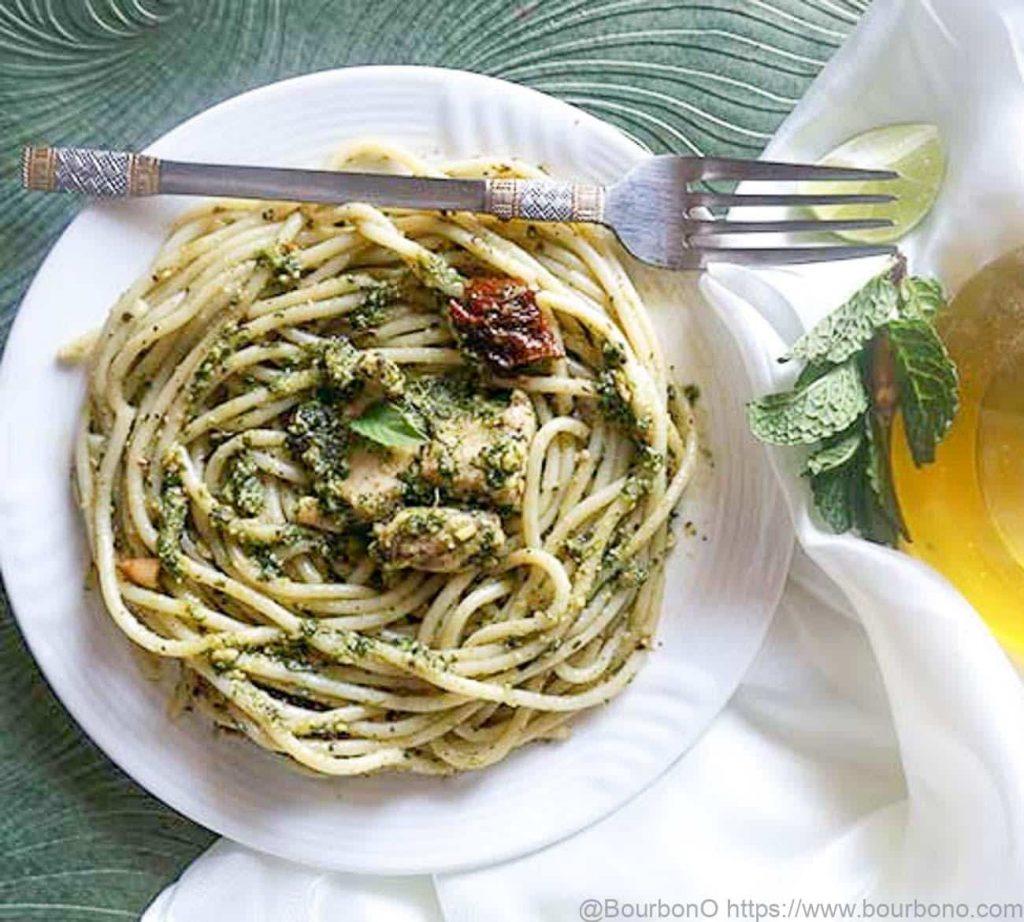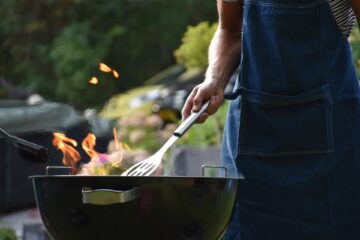If you are Acid Reflux Sufferers, then you know that eating pasta can be a real challenge. Most pasta dishes are high in acidic ingredients like tomatoes and garlic which can aggravate your symptoms. But that doesn’t mean you have to give up on your favorite Italian dish altogether. There are plenty of delicious and easy-to-make pasta recipes that are perfect for those with acid reflux.
In this article, we will share five of our favorite pasta recipes that are both healthy and delicious. We’ll also provide some tips on how to cook pasta so it’s perfect for those with acid reflux.
So whether you’re looking for a new recipe to try or just need some advice on how to make your old favorites more stomach-friendly
The problem of acid reflux Sufferers and how it can be aggravated by pasta dishes

The National Institute of Diabetes and Digestive and Kidney Diseases (NIDDK) of the U.S. Department of Health and Human Services reported that about 20 percent of people in the United States have GERD, a serious form of acid reflux.
This implies that millions of Americans suffer from serious or chronic acid reflux, necessitating slight tweaking of existing recipes and developing new delicious recipes perfect for acid reflux sufferers.
Eating pasta dishes may be challenging for those with frequent acid reflux episodes because most pasta dishes have tomato-based sauces. Unfortunately, tomato has low pH, which is acidic and can worsen your symptoms. This, coupled with other dietary restrictions, would probably make you find pasta meal times as boring as ever.
But not to worry, we have some amazingly delicious pasta recipes for acid reflux sufferers. You can even enjoy your pasta plain. We’ll show you the tricks, so please come along!
Understanding Acid Reflux
Acid reflux, also known as gastroesophageal reflux disease (GERD), is a common digestive disorder that occurs when stomach acid flows back up into the esophagus. This can happen due to a malfunctioning lower esophageal sphincter (LES), which is a ring of muscle that acts as a valve between the esophagus and the stomach. When the LES doesn’t close properly, stomach acid can escape into the esophagus, causing irritation and inflammation.
There are several factors that can contribute to the development of acid reflux. These include:
- Lower Esophageal Sphincter Dysfunction: The LES can weaken or relax, allowing stomach acid to flow back up into the esophagus.
- Hiatal Hernia: A hiatal hernia is a condition where a portion of the stomach pushes through the diaphragm and into the chest, which can affect the LES.
- Obesity: Excess weight can put pressure on the stomach, causing acid to back up into the esophagus.
Some common symptoms of acid reflux include heartburn, regurgitation, chest pain, and difficulty swallowing. If left untreated, acid reflux can lead to complications such as esophageal ulcers, strictures, and Barrett’s esophagus.
Certain foods can trigger acid reflux symptoms, including citrus fruits, spicy foods, caffeine, chocolate, and fatty or fried foods. However, not all foods affect everyone the same way, and it’s important to identify your own trigger foods to avoid.
In addition to avoiding trigger foods, there are several lifestyle changes that can help manage acid reflux symptoms. These include eating smaller, more frequent meals, avoiding lying down after eating, and elevating the head of your bed when sleeping.
By understanding the causes and symptoms of acid reflux, you can take steps to manage your symptoms and improve your quality of life. Consult with your healthcare provider to determine the best course of treatment for your individual case.
Why Pasta is a Good Choice for Acid Reflux Sufferers
When it comes to managing acid reflux symptoms through diet, pasta can be a great food choice for several reasons. Here are some reasons why pasta is a good choice for acid reflux sufferers:
- Low Fat Content: Pasta is a low-fat food, which means it’s less likely to trigger acid reflux symptoms. Foods high in fat can cause the LES to relax, allowing stomach acid to flow back up into the esophagus.
- High Carbohydrate Content: Pasta is a high-carbohydrate food, which can help absorb stomach acid and reduce the risk of acid reflux symptoms.
- Easy to Digest: Pasta is easy to digest and doesn’t stay in the stomach for too long. This means there’s less time for stomach acid to back up into the esophagus.
It’s important to note that not all pasta dishes are created equal when it comes to managing acid reflux symptoms. Here are some tips for choosing the right pasta dishes:
- Choose Whole Grain Pasta: Whole grain pasta is a good source of fiber, which can help regulate digestion and reduce the risk of acid reflux symptoms.
- Avoid Acidic Tomato Sauces: Tomato-based pasta sauces can be high in acid, which can trigger acid reflux symptoms. Consider choosing non-acidic pasta sauces such as pesto, cream sauce, or olive oil and garlic.
- Cook Pasta Al Dente: Overcooked pasta can be difficult to digest, which can increase the risk of acid reflux symptoms. Cook pasta al dente, or firm to the bite, to make it easier to digest.
In addition to these tips, there are plenty of delicious pasta dishes that are safe for people with acid reflux to enjoy. Some examples include:
- Spaghetti with tomato sauce made with low-acid tomatoes
- Pasta primavera made with non-acidic vegetables like zucchini, yellow squash, and broccoli
- Baked ziti made with low-fat cheese and lean ground turkey
By choosing the right pasta dishes and following these tips, people with acid reflux can enjoy a delicious and satisfying meal without having to worry about triggering their symptoms.
5 Choice Pasta Recipes For Acid Reflux Sufferers
There’s no need to give up on your favorite Italian dish just because you suffer from acid reflux. There are plenty of delicious and easy-to-make pasta recipes that are perfect for those with acid reflux.
In this article, we will share five of our favorite pasta recipes that are both healthy and delicious. We’ll also provide some tips on how to cook pasta so it’s perfect for those with acid reflux.
So whether you’re looking for a new recipe to try or just need some advice on how to make your old favorites more stomach-friendly, read on for our picks for the best pasta dishes for acid reflux sufferers.
Spaghetti with Marinara Sauce

This classic Italian dish is a mealtime favorite for many people. It’s quick and easy to make and is also very affordable.
Spaghetti is made from wheat which can be difficult on the stomach, but you’ll want to stick with whole-wheat varieties which contain more fiber and nutrients than their refined counterparts.
This recipe calls for just a few simple ingredients: marinara sauce, fresh basil, ground black pepper, extra virgin olive oil, salt.
Ingredients
- Spaghetti
- Two 28-ounce cans of San Marzano tomatoes
- 3 tbsp. of olive oil
- ¼ cup of fresh basil
- ½ tsp. of baking soda
- 1 small bulb of onion (diced)
- Salt
Preparation
- Boil some water in a large pot, add salt to the boiling water, and then add your spaghetti to cook according to the instructions on the package.
- Once your spaghetti is cooked, drain and keep a cup of the pasta water for later use.
- Prepare your tomatoes by emptying the canned tomatoes into a large bowl and crushing carefully to prevent squirting and splashing everywhere.
- To prepare the sauce, heat olive oil in a saucepan over medium heat and add your chopped onions. Allow it to cook for 2-3 minutes until it is translucent.
- Add the crushed tomatoes and ½ tsp baking soda and stir. Simmer the sauce for about 25 minutes to see if it still tastes sour or sharp. You can add more baking soda as you deem fit.
- Add your chopped fresh basil (optional), stir, and simmer for 5 more minutes.
- Remove the pan from the heat source when the sauce is ready.
- Serve with your spaghetti, and enjoy!
Creamy Chicken Pasta Recipe

This creamy chicken pasta dish is perfect for those who enjoy rich flavors without all the excess fat that you’d find in something like Alfredo sauce.
Instead of using heavy cream or cheese to achieve that creamy texture, this recipe uses a combination of low-fat milk and plain Greek yogurt.
Chicken is also rich in protein which will help to keep you full for longer periods of time. This makes it the perfect base for an acid reflux-friendly pasta dish.
Ingredients
- 340g box of gluten-free pasta
- 1 cup of lactose-free milk or skimmed milk
- 3/4 cup of cream cheese
- 500g of boneless, skinless chicken breasts
- 3/4 cup of shredded parmesan cheese
- 2 tbsp. olive oil
- Salt to taste
- Spinach, parsley, and artichoke hearts (optional)
- Black pepper (optional)
Preparation
- Wash and cut chicken breasts into small, bite-sized chunks.
- If you add vegetables, wash them thoroughly before chopping/dicing.
- Add salt to boiling water, add your pasta, and cook according to the instructions on the package.
- While the pasta is cooking, steam up the spinach, parsley, or artichoke hearts in a small saucepan and set aside (that is, if you have decided to add spinach).
- Heat olive oil in a large saucepan. Ensure that the stove is on medium-high heat. Then, add your chicken and stir for about 30 seconds, then allow to cook for 4 minutes until it is thoroughly cooked and nicely browned.
- Once the pasta is cooked, drain and keep a little of the pasta water for later use in case the sauce comes out too thick.
- In the saucepan containing your chicken, add your cream cheese, milk, shredded parmesan cheese, and, if you like, black pepper. Stir continuously and allow to cook for about 3 minutes until the cheese melts and the sauce thickens to your taste. Be careful not to burn your sauce.
- Finally, add the cooked pasta, spinach, and artichokes to the creamy chicken sauce and stir thoroughly to combine.
- Your creamy chicken pasta is ready. You can serve it immediately or decide to save it for later. Reheat it in the microwave when you are prepared to eat.
Read more recipes: What does Chamoy taste like? What is it?
Chicken Pesto Pasta Recipes

One of the best things about pesto sauce is that it’s so easy to make right at home using just a handful of simple ingredients: basil leaves, garlic, olive oil, pine nuts or walnuts, parmesan cheese (optional), salt and pepper.
This particular chicken pesto recipe adds tomatoes to the mix as well as chicken breast for added protein. It makes for a quick and easy weeknight meal that packs in plenty of flavor without adding too many unhealthy ingredients.
Ingredients for chicken pesto pasta
- ½ box (250g) of penne pasta
- 500g of boneless, skinless chicken breasts
- 1 tbsp. olive oil
- ¾ cup of basil pesto
- ¼ tsp. salt
- 1 tsp. seasoning of your choice
- ¼ tsp. black pepper (optional)
You may not want to use store-bought basil pesto as it usually contains garlic known to aggravate acid reflux symptoms. Therefore, you will have to make your basil pesto.
Preparation of chicken pesto pasta
- Add salt to boiling water, and then add your penne pasta to cook according to the instructions on the package.
- While your pasta is cooking, pour olive oil into a large skillet and let it heat up for about a minute on medium-high heat. Then, add the chicken breasts, salt, and seasoning and stir well to ensure the chicken is well coated. Cover the skillet with a lid and let the chicken cook for about 5-7 minutes while stirring at intervals.
- Once your pasta is cooked, drain and keep a little of the pasta water for later use.
- Add your cooked pasta, a little pasta water, and the basil pesto to the chicken and stir to mix. Turn off the stove after a few seconds to prevent the basil pesto from turning dark.
- Serve and enjoy.
Spaghetti Carbonara Recipes

For those who love the flavors of bacon, pancetta, and egg but are worried about how it might affect their acid reflux, spaghetti carbonara offers an amazing alternative. This recipe will show you how to whip up a delicious plateful while keeping your digestive system happy.
The real secret to making this dish stomach-friendly is boiling the pasta in stock rather than water which eliminates much of its starch content while also infusing it with tons of other flavorful ingredients.
Ingredients
- 250g spaghetti
- 1 medium-sized canned tuna
- ½ cup of freshly grated parmesan cheese (or cheddar cheese)
- 2 medium-sized eggs
- Salt to taste
- 2 tbsp. of fresh parsley or any other fresh herb such as basil or chives
Preparation
- Open the tuna can and drain the oil. You will only need about 1 tablespoon of tuna oil for your dish.
- Wash fresh herbs thoroughly to remove any dirt before chopping.
- Add salt to boiling water, add your spaghetti, and cook according to the instructions on the package.
- While pasta is cooking, whisk eggs together in a small bowl, and add the parmesan cheese (or cheddar cheese) and salt. Then mix well.
- Once your pasta is cooked, drain and keep a little of the pasta water for later use.
- Keeping your stove on medium-high heat, flake your drained tuna on the pasta and stir in the egg mixture, 1 tablespoon of canned tuna oil, and the pasta water you kept aside earlier. Add the pasta water a little while stirring gently until your desired consistency is attained.
- Garnish with fresh parsley, basil, or chives, and serve.
Vegan Pumpkin Pasta Recipes

If you’re looking to cut back on your meat intake, then this vegan pumpkin pasta recipe is definitely something to try. It’s rich and creamy with a full-bodied flavor that comes from the simple combination of roasted butternut squash, onions, garlic, vegetable broth, salt and pepper. The addition of sage provides a nice hint of spice while keeping things flavorful without being too overpowering.
Ingredients
- 1 box/pack of pasta (any pasta of choice)
- 1 medium-sized canned pumpkin puree
- 1½ cups of vegetable broth
- 1 medium-sized canned coconut milk
- 2 tbsp. of vegan butter or olive oil
- 2 cloves of garlic
- ½ tsp. of chili powder (optional)
- ½ tsp. of fresh sage leaves
- ½ tsp of salt
- Mushroom or other vegetables of choice (optional)
Preparation
- Boil some water in a large pot, add salt to the boiling water, and then add your pasta and cook according to the instructions on the package.
- While your pasta is cooking, add your vegan butter or olive oil to a large skillet and allow it to melt/heat up for about a minute on medium-high heat. Next, add your minced garlic and sauté for 2 minutes.
- Add the canned pumpkin puree, coconut milk, vegetable broth, chili powder, and salt. Stir for 10-15 minutes until the sauce thickens slightly.
- Once your pasta is cooked, drain and add to the sauce while stirring to combine.
- Sprinkle some fresh or dried sage leaves.
- Serve and enjoy!
What kind of pasta is good for acid reflux?
When it comes to choosing the right type of pasta for acid reflux sufferers, there are a few options to consider.
Firstly, whole grain pasta is a good choice as it is high in fiber which can help regulate digestion and reduce the risk of acid reflux symptoms.
Additionally, it’s best to choose pasta that is cooked al dente, or firm to the bite, as this makes it easier to digest. Overcooked pasta can be difficult to digest, which can increase the risk of acid reflux symptoms.
Finally, it’s important to avoid pasta dishes that are high in fat or acidic ingredients, as these can trigger acid reflux symptoms. Cream-based sauces, tomato-based sauces, citrus fruits, and vinegar should be avoided.
Overall, some good pasta choices for acid reflux sufferers include whole grain pasta cooked al dente with non-acidic sauces or ingredients like olive oil, garlic, non-acidic vegetables, and lean proteins such as chicken or turkey.
Tips for Preparing Acid Reflux-Friendly Pasta Dishes
While pasta is generally a good choice for people with acid reflux, the preparation method and accompanying ingredients can make a big difference in whether or not a dish will trigger acid reflux symptoms. Here are some tips for preparing acid reflux-friendly pasta dishes:
- Cook Pasta Al Dente: Overcooked pasta can be difficult to digest, which can increase the risk of acid reflux symptoms. Cook pasta al dente, or firm to the bite, to make it easier to digest.
- Avoid Heavy Cream Sauces: Cream-based sauces can be high in fat, which can trigger acid reflux symptoms. Consider using non-fat milk or low-fat cheese instead of heavy cream to create a creamy texture without the added fat.
- Choose Non-Acidic Ingredients: Avoid acidic ingredients such as tomato-based sauces, citrus fruits, and vinegar. Instead, opt for non-acidic ingredients like olive oil, garlic, non-acidic vegetables, and lean proteins such as chicken or turkey.
- Experiment with Herbs and Spices: Use herbs and spices such as oregano, basil, parsley, and thyme to add flavor to pasta dishes without adding acid or fat.
- Serve Small Portions: Eating large portions can put pressure on the stomach and increase the risk of acid reflux symptoms. Serve smaller, more frequent meals to keep digestion on track.
- Don’t Eat Too Late: Eating too close to bedtime can increase the risk of acid reflux symptoms. Aim to eat your last meal at least 2-3 hours before bedtime to give your body time to digest.
Tip! To cook your pasta so it’s perfect for those with acid reflux… Boil it in stock instead of water which will infuse it with flavors that won’t trigger reflux issues. You can also use gluten-free pasta if you find that regular varieties are too difficult on your stomach.
Loaded with antioxidants, this tomato-based sauce is perfect for those who enjoy the zesty tang of tomatoes without all the extra acidity. You can also whip up a white clam sauce or pink shrimp scampi variation if you want to mix things up.
This is the perfect dish for those who prefer not to do dairy but still love that creamy flavor in their pasta dishes. The recipe calls for just 5 simple ingredients: spaghetti (or angel hair), fresh basil, garlic, olive oil, salt and pepper. Plus it only takes 20 minutes from start to finish!
Read more: How to make your own Popeye’s gravy recipe
When it comes to cooking pasta that’s perfect for those with acid reflux, here are a few things to keep in mind:
- First, try boiling your pasta in stock instead of water. This will add flavor and reduce the starch content, making it easier on your stomach.
- You can also use gluten-free pasta if you find that regular varieties are too difficult on your stomach.
- Another thing to keep in mind is to avoid heavy, acidic ingredients like tomatoes and garlic. Instead, try recipes with lighter sauces like marinara or pesto.
- And finally, make sure to load up on protein and fiber-rich vegetables to help offset any potential discomfort.
- In order to get all of these important nutrients, you’ll want to add some protein-packed chicken or fish to your pasta along with fiber-rich vegetables like broccoli.
- As long as you avoid the ingredients that trigger reflux, there are plenty of delicious pasta dishes that can easily be made while managing acid reflux.





Am i just missing the actual recipes? Or do you have to buy a book with them because I can’t find them on this page at all!!!I see the pictures and the articles but no recipe. Thanks
https://www.amazon.com/dp/B09VZQH922
This is book you need
I really need to visit this website more often, this is a gold mine of information.
Thank you for the post on your blog. Do you provide an RSS feed?
Isn’t Marinara sauce made from tomatoes?
Marinara sauce is actually a tomato sauce
Very nice article, exactly what I was looking for.
The main ingredient (first by weight) is garlic! Don’t use store-bought wet or dry. You have to make your own without it.